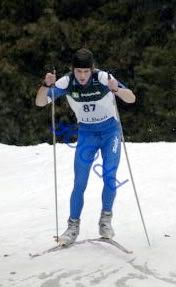My wife and I own a medical pain clinic so I'm professionally involved with knee and low back rehab among various other conditions. Personally, my interest stems from my own advanced degenerative disc disease. I'm 58, but don't intend to give up backpacking, skiing, or weight lifting.
In my opinion, the best way to strengthen the spinal erectors if you already have a low back problem, is a reverse hyperextension. (Piggyslayer will recognize this as a favorite of Louie Simmons at Westside.) If you don't belong to a commercial gym that has this apparatus, set it up this way in your home gym: use a high work bench, adjusted with blocks if necessary so that it comes to the juncture between upper thigh and torso. When you lie across the bench, your upper body is supported by the bench, and your legs form a right angle to your torso while your feet just barely rest on the floor. Hold something with your hands like the sides of the work bench to stabilize your torso, and raise your legs until they are in line with your body and parallel to the floor.
As you get stronger add resistance in the form of ankle weights. At some point you'll need more weight; use a rope looped through some weight plates, and slip the loop over your feet. Since you can't go any higher than parallel to the floor, you won't bang your shins.
If you're starting with some serious back problems, the first thing to do is get examined by a physician knowledgeable about sports medicine. Then, if cleared by your physician, work up to the reverse hyperextension by lying face-down on the floor. With head lifted off the floor, raise the right arm and left leg as high as your can. Lower the raised arm and leg and raise the left arm and right leg. (Physical therapists will recognize the move pioneered by Robin McKenzie.) Both the floor move and the reverse hyperextension keep the spine in a supported positon for safety.
Like some others on this forum, I'm skeptical of the overuse of supporting belts. They do, however, have their place. When I ski, I use the Valejo semi-soft belt tightened enough to give some stabilization to my back. I also use a belt when squatting. Among sports conditioning experts there is controvery about whether more stability is provided by going beltless and sucking in the stomach hard when squatting, or by using a weight lifting belt and pushing the stomach against the belt. Paul Chek espouses the former position. Most strength trainers like a belt. I use a belt when squatting.
Squatting, where to start? This is a massively complex issue. I don't think there is anything superior for the quads, glutes, hams, low back, hips, knees, and ankles--if they're done correctly. In our clinic, of every 50 people who could benefit from them, we teach it to only one or two folks. Most folks will get in trouble with it unless they do the months of preperatory work on back, hips, knees, and ankles first. Then they need an experienced coach or trainer to assess their execution.
For those who already squat--keep doing it until you die. If you do back squats, use the manta ray; if you do front squats, use the sting ray. In the fore/aft thread I gave a web site where you could view them. BTW, I advocate rock bottom, butt to the ground, squats for maximum benefit--after months of slow progression and presuming relatively sound knees.
If this subject is of interest to others than Piggyslayer, BigE, and Biowolf, I hope this monograph
Michael


